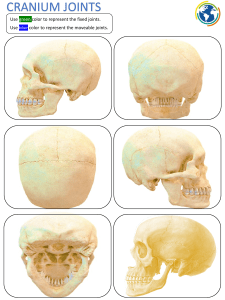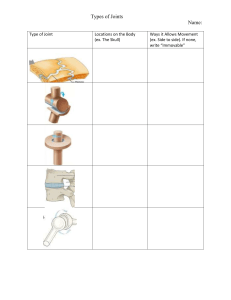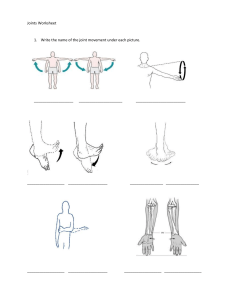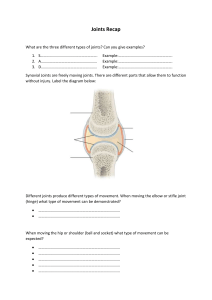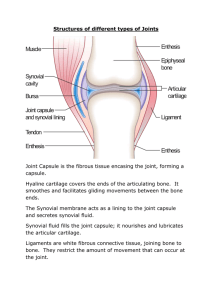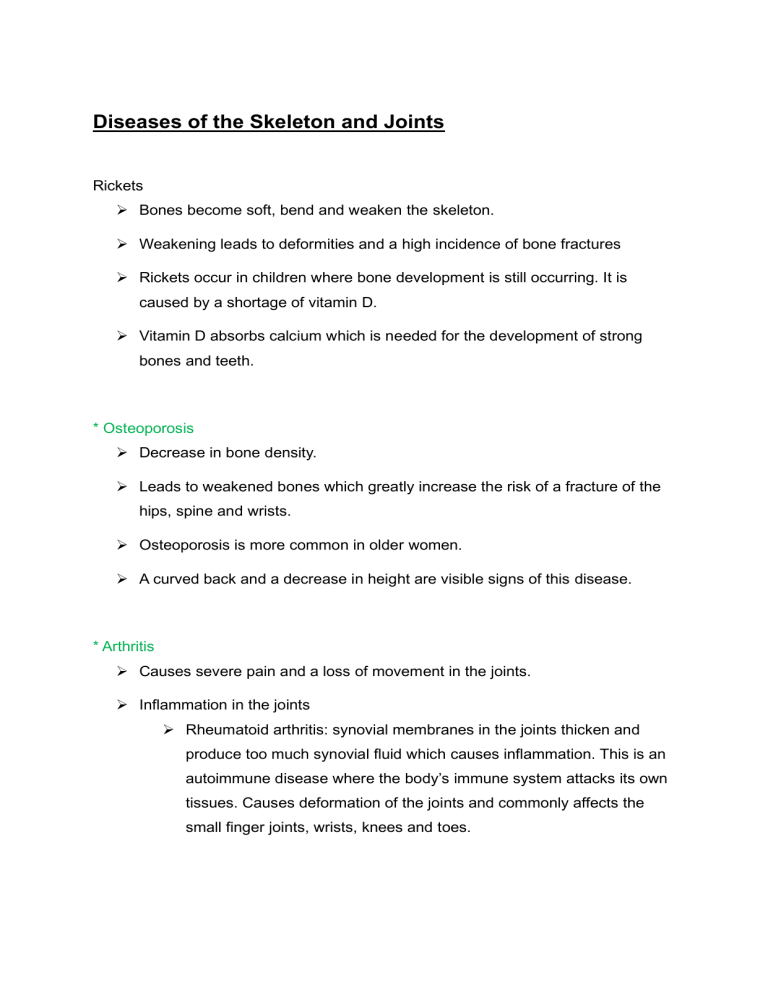
Diseases of the Skeleton and Joints Rickets ➢ Bones become soft, bend and weaken the skeleton. ➢ Weakening leads to deformities and a high incidence of bone fractures ➢ Rickets occur in children where bone development is still occurring. It is caused by a shortage of vitamin D. ➢ Vitamin D absorbs calcium which is needed for the development of strong bones and teeth. * Osteoporosis ➢ Decrease in bone density. ➢ Leads to weakened bones which greatly increase the risk of a fracture of the hips, spine and wrists. ➢ Osteoporosis is more common in older women. ➢ A curved back and a decrease in height are visible signs of this disease. * Arthritis ➢ Causes severe pain and a loss of movement in the joints. ➢ Inflammation in the joints ➢ Rheumatoid arthritis: synovial membranes in the joints thicken and produce too much synovial fluid which causes inflammation. This is an autoimmune disease where the body’s immune system attacks its own tissues. Causes deformation of the joints and commonly affects the small finger joints, wrists, knees and toes. ➢ Osteoarthritis: cartilage that forms part of a joint ages and disintegrates with time. The bones in the joint grind against each other and cause inflammation. Occurs in the hips, knees, feet, fingers and spine. Joints can disintegrate as a person ages, or as a result of sports (high physical activity) and previous injuries. Age, physical activity and previous injuries could all lead to more wear and tear on the cartilage of the joints. - Articular cartilage of joint wears away. - Bones of joint grind against each other. - Small outgrowths of bone produced.

